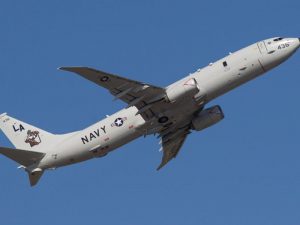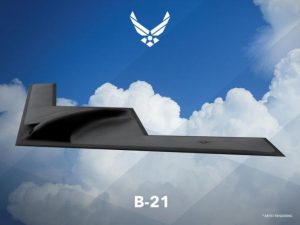2016-12-11 By Danny Lam
President Trump stunned the aerospace community by calling for the cancellation of Boeing’s program to replace Air Force One with a new pair of modified 747-800s, citing its $4 billion cost. Experts familiar with the program note the cost is not out of line given the requirements and specifications.
However, the concern is always with cost growth, which caused President Obama to “re-initiate” or effectively cancel and rebid the Marine One replacement fleet program after costs doubled.
Thus, the precedent is there for rebooting wayward programs and scrapping partly built airframes when cost estimates exceeded $13 billion with $3 billion spent.
With any defense / national security oriented procurement, the largest element of costs are “baked in” when requirements are initially specified; and second, added to or modified as “bright ideas” for new features, capabilities, or oversights keep coming. Long lifecycles for designs, few units produced, and the requirement to stockpile scarce parts and spares for the project life of 30 or more years add up to high costs.
Civilian acquisitions tend to focus on, “must fix” oversights or errors in designs. Fixes are prioritized to those affect safety, regulatory compliance, usability and costs as it affect liability and warranty claims, then cost reduction ideas. Comparatively short product life cycles also enable issues to be “caught” in the next iteration.
Most commercial products are not required by law to provide parts or support for products beyond the statutory maximum. All this add up to a civilian industrial dynamic that over time, have outpaced the defense / military space, resulting in the anomaly of civilian Android or iPhones that refresh on a 2 year cycle that far exceed the capabilities of most military equivalents procured at many times the cost.
With this perspective, how might the Air Force One Replacement Program be “rebooted”?
First issue to question is whether the requirements from the 1980s are still appropriate today. 1980s era specifications called for 3 or more engines, and featured facilities for travelling journalists, staff, and conference rooms, totaling 100 persons, in addition to the mandatory features of command and control systems, medical facilities, and defense systems.

The need to accommodate a large travelling press pool is a quaint throwback to the pre-internet era of media dominated by a few large national broadcasters and a handful of papers of record. A large press pool that is traveling with the President and his entourage adds little of value except to give the President and his officials the opportunity to give “candid” in flight interviews. But it adds to the burden of being self-sufficient in food, and other hotel facilities.
This is at the cost of making logistics much more complex, and imposing size requirements on Air Force One that takes away from its primary mission of providing a secure, safe, comfortable transport and enabling the US executive branch of government to function: commanding and controlling US Forces from anywhere in the event of war or disaster.
Likewise, it is an open question as to what is the appropriate number of staff required on Air Force One. Is there is room to shrink the list by methods and means common in industry such as cross training Presidential staffers? Or for the crew, cross training them to (e.g.) eliminate the need for dedicated medical personnel and secret service agents? What about taking ideas common in the RV industry such as fold-away beds, convertible conference rooms, etc.? Or less elaborate galleys?
Shrinking the headcount capacity and size requirement would in turn, allow smaller aircraft to be considered for Air Force One candidates in a new competition.
Should a new competition be run on this basis, it is conceivable that there are at least two viable candidates:

A Boeing 737 variant that is presently used in three major military versions (C-40 Clipper, 737 AEW&C, and P-8 Poseidon) that will have most of the features required in Air Force One with a smaller footprint. Features like in-flight refueling, secure communications (at a more rudimentary level), countermeasures and some degree of hardening (which can be augmented) already exist.
By mixing and matching from these three variants, it is conceivable that relatively little non-recurring engineering costs are required to get many of the features required by Air Force One.
Whatever developed for the “airborne White House” will be broadly usable / applicable to the whole fleet. Because the 737 will be a common platform with many more units in service that the 747-800, parts and maintenance logistics will also be simplified going forward.
Alternatively, another option could be to study whether Air Force One’s core missions are better served by a radical departure toward a far more safe and secure aircraft that is more likely to survive as a “command post in the sky” during a nuclear war.
The B-21 Raider presently in development may be limited in capacity and ability to offer creature comforts to POTUS and staff given its tight interior space.
But it is a front line, state-of-the-art combat aircraft with nuclear EMP resistance standard, and its stealthy features will make targeting it more challenging.
A B-21 based Air Force One can be operated in pairs, splitting some of the travel staff into the second craft and have them networked with a MADL like secure link.
The “pair” can in turn be accompanied (if required) by another heavily armed B-21 with extensive defensive equipment on board to protect the fleet.
Air Force One based on the Boeing 747 was a symbol of American power for the 20th Century.
With the proliferation of threats against large civilian airliner based platforms, perhaps it is time to ask fundamental questions as to how best to protect core capabilities for the “flying White House”.
The Air Force One Replacement program is still in its early stages with only $170 million for design awarded so far. There is no better time to take a second look at the program and see if there are better ideas going forward.

